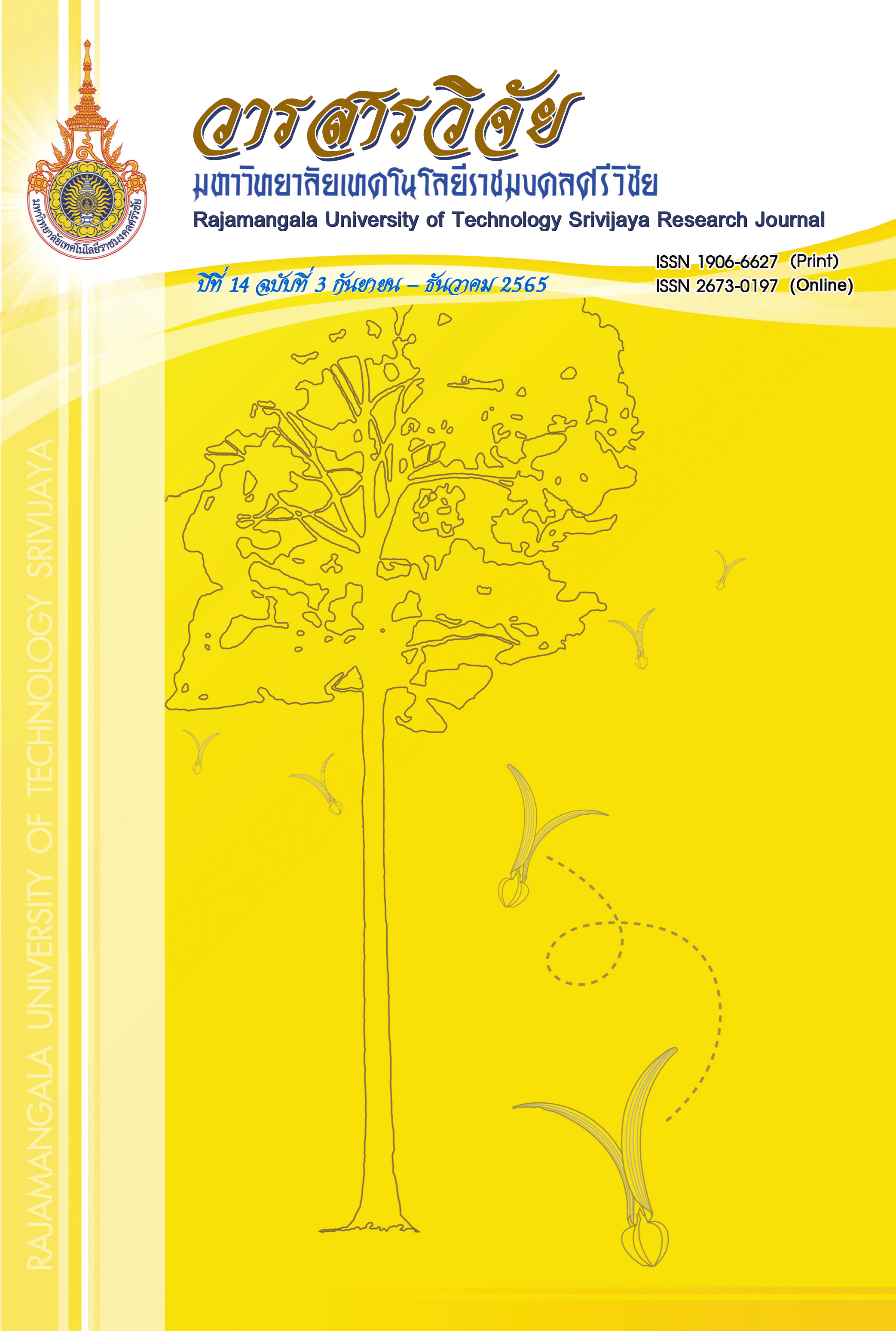The Effect of Extracted Color from Mixed Betel Nut, Piper Betel and Red Lime for Dyeing Rayon Fabric
Keywords:
color fastness, extracted color, rayon fabric, betel nut, piper betel, red lime, fixing agentAbstract
This research aims to investigate factors affecting rayon fabric dying using betel nut extract mixed with piper betel and red lime. The ratios of betel nut, piper betel and red lime were tested at 4:3:1, 8:6:1 and 10:8:1. The ratio of mixtures to water was at 1:5 wt./vol. The color water at optimum condition was applied with 3 fixing agents at different concentrations. They were (1) NaCl 10%, 20% and 30% wt./vol, (2) AlK(SO4)2 0.3%, 1.6% and 3.3% wt/vol, and, (3) a mixture of NaCl and AlK(SO4)2 at 11:1, 5:1 and 1:1 with concentration of 10 wt./vol. The dyeing time was studied at 20, 40 and 60 minutes. The results found that color extracts were at pH 9.98 - 12.12. At 70°C for dyeing and all dyed rayon fabrics gave the same shade of color (a yellowish-brown). At ratio of 10:8:1, the highest a* (redness) and b* (yellowness) values were obtained at 9.53 and 18.65, respectively. For the color of the rayon fabric after dyeing with NaCl and AlK(SO)4)2 of 5:1, the lowest L* with highest a* and b* values was observed. The DE* and C* values were also the highest. The optimum dyeing time with color from optimum condition was 20 minutes. Additionally, the color strength in sunlight after 20 days was at moderate level.
References
Aonfak, K., Kanakiat, N., Uttarat, P., Pingaew, R. and Kaenthong, S. 2016. Dyeing Polyester Fabrics with Curcumin using Infrared Dyeing Machine. Burapha Science Journal 21(3): 23-37. (in Thai)
Bhattacharya, S.D. and Shah, A.K. 2000. Metal Ion Effect on Dyeing of Wool Fabric with Catechu. Coloration Technology 116(1): 10-12.
Guesmi, A., Naoufel, B.H., Neji, L. and Sakli, F. 2013. Sonicator Dyeing of Modified Acrylic Fabrics with Indicaxanthin Natural Dye. Industrial Crops and Products 42: 63-69.
Jitphusa, A and Rattanankij, T. 2016. Process of Dyeing Chinese Silk Fabric Using Color of Water Betel Nuts. Journal of Thai Interdisciplinary Research 11(6): 20-26.
Park, J. 1993. Instrumental Colour Formulation: A Practical Guide Society of Dyers, and Colourists. Society of Dyers and Colorists, West Yorkshire, England.
Pimchan, P. 2015. The Enhancing Color Fastness and Color Strength of Natural Pigment for Cyperus Papyrus L. Fibril Dyeing. Koch Cha Sarn Journal of Science 37(2): 61-72. (in Thai)
Sakulborisut, K., Kraisuwan, S. and Piromthamsiri, K. 2016. The Effect of Mordants on The Color Fastness of Natural Brown Colored Cotton Fabric. Srinakharinwirot University (Journal of Science and Technology) 8(15): 1-11. (in Thai)
Sukonthamanee, P. 2017. Color of Flora. Silpakorn University Journal 37(3): 183-202. (in Thai)
Watters, C. and Cantero, A. 1965. Rat Liver Parenchymal Cell Function during Azo Dye Carcinogenesis. Cancer Research 25(1): 67-71.
Downloads
Published
How to Cite
Issue
Section
License
Copyright (c) 2022 Rajamangala University of Technology Srivijaya Research Journal

This work is licensed under a Creative Commons Attribution-NonCommercial-NoDerivatives 4.0 International License.
The content and information in the article published in Journal of Rajamangala University of Technology Srivijaya It is the opinion and responsibility of the author of the article. The editorial journals do not need to agree. Or share any responsibility.







